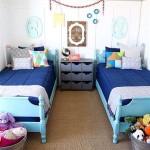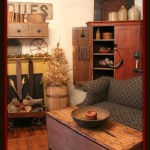How to Decorate a Large Living Room
Decorating a large living room presents a unique set of challenges and opportunities. The expansive space can feel overwhelming if not properly planned. The goal is to create a comfortable, functional, and visually appealing environment that encourages relaxation and social interaction. This requires careful consideration of layout, furniture selection, color palettes, and accessories. Successful execution will transform a vast, empty space into a welcoming and inviting heart of the home.
One of the most common pitfalls is treating the area like a blank canvas, failing to define distinct zones. Resist the urge to simply place furniture around the perimeter of the room, as this can make the space feel cavernous and unwelcoming. Instead, consider the activities planned for the room and create zones that support them. Examples include a conversation area, a reading nook, a media center, or even a dedicated workspace. These zones should be cohesive and flow naturally, preventing a disjointed appearance.
Planning and Zoning
Effective zoning is paramount for large living rooms. Before selecting furniture or decor, carefully assess the dimensions and features of the space. Note any architectural elements, such as fireplaces, built-in shelving, or large windows. These features can serve as focal points around which to arrange furniture. The overall layout will determine the flow and function of the room. The following points should be taken into consideration for planning and zoning:
- Define Zones: Determine the specific activities that will take place in the living room. Consider conversation areas, entertainment zones, reading nooks, or even home office spaces.
- Create Flow: Ensure a natural and intuitive traffic pattern through the room. Avoid blocking pathways or creating obstacles. Allow ample space for movement between zones.
- Consider Scale: Large rooms require furniture that is appropriately sized. Avoid using small pieces that will be swallowed by the space.
- Utilize Rugs: Area rugs are essential for defining zones and anchoring furniture groupings. Choose rugs that are large enough to contain the entire furniture arrangement within a zone.
- Incorporate Lighting: Layer lighting to create ambiance and functionality. Use a combination of ambient, task, and accent lighting to illuminate different areas of the room.
- Furniture Placement: Arrange furniture to encourage conversation and social interaction. Group seating around a central focal point, such as a fireplace or a television. Avoid pushing all furniture against the walls.
Furniture Selection
Furniture choices are crucial in a large living room. The scale of the furniture should match the size of the room. Under-sized furniture will make the space feel empty and uninviting. Over-sized furniture can overwhelm the room and make it feel cramped. The key is to choose pieces that are proportionate to the overall dimensions of the space. Several key strategies can be used for furniture selection in the living room:
- Consider Scale: Choose furniture that is appropriately sized for the room. Select larger sofas, sectionals, and coffee tables to fill the space. Avoid small, dainty pieces that will be lost in the vastness.
- Create Groupings: Instead of placing furniture against the walls, create conversation areas by grouping seating around a focal point, such as a fireplace or a television. Use area rugs to define these zones.
- Choose a Mix of Pieces: Vary the types of furniture to add visual interest and functionality. Include a combination of sofas, armchairs, ottomans, coffee tables, side tables, and possibly a console table or credenza.
- Opt for Sectionals or Large Sofas: These pieces are often ideal for filling large spaces and providing ample seating. Consider L-shaped sectionals or sofas with chaise lounges to maximize seating capacity.
- Incorporate Storage: Large living rooms often require significant storage solutions. Incorporate storage ottomans, bookshelves, or media consoles to keep the space organized and clutter-free.
- Select Multifunctional Furniture: Consider furniture pieces that serve multiple purposes. An ottoman that doubles as a coffee table or a sofa with built-in storage can maximize functionality.
Color Palette and Textures
The color palette chosen will significantly impact the overall atmosphere of the room. A unified color scheme helps create a cohesive and visually appealing space. Texture brings depth and visual interest to the room. Employing the right palette and texture is critical to achieve the desired aesthetic.
- Choose a Cohesive Color Scheme: Select a color palette that complements the overall style of the home. Consider using neutral base colors (white, beige, gray) to create a sense of spaciousness. Accent colors can then be incorporated to add pops of personality and interest.
- Incorporate Textures: Use a variety of textures to add depth and visual interest. Combine smooth surfaces (leather, glass) with rougher textures (woven fabrics, wood, stone).
- Consider Wall Color: Light-colored walls will make the room feel larger and brighter. Dark-colored walls can create a more intimate and cozy atmosphere, but may also make the space feel smaller. Choose a wall color that complements the furniture and accessories.
- Utilize Textiles: Use textiles, such as throw pillows, blankets, and curtains, to add color, pattern, and texture. Layering different textiles can create a warm and inviting environment.
Lighting and Accessories
Lighting is essential for setting the mood and creating ambiance. Layering different light sources adds depth and functionality. Accessories are the finishing touches that personalize the space and reflect the homeowner's style.
- Layer Lighting: Implement a combination of ambient, task, and accent lighting. Ambient lighting provides overall illumination, task lighting is used for specific activities (reading, working), and accent lighting highlights architectural features or artwork.
- Use Large-Scale Art: Select artwork that is proportionate to the size of the walls. Large-scale pieces can make a statement and fill empty wall space.Consider mirrors to reflect light and make the room feel larger.
- Add Greenery: Incorporate plants and greenery to bring life and freshness into the space. Large potted plants can add visual interest and soften the décor.
- Choose Decorative Accessories: Add decorative accessories, such as vases, sculptures, and trays, to personalize the space. Choose items that reflect personal interests and complement the overall style of the room.
- Incorporate Window Treatments: Select window treatments that complement the style of the room and provide privacy and light control. Curtains, blinds, or shutters can be used to enhance the aesthetic appeal.

How To Decorate A Large Living Room Ruggable Blog

10 Tips For Styling Large Living Rooms Other Awkward Spaces The Inspired Room

13 Strategies For Making A Large Room Feel Comfortable

10 Tips For Styling Large Living Rooms Other Awkward Spaces The Inspired Room

13 Tricks To Decorating A Large Living Room

How To Decorate A Large Living Room Peninsula
Interior Designers Reveal The Mistakes You Re Making In A Living Room

How To Decorate A Large Living Room Make It Feel Cosy

10 Tips For Styling Large Living Rooms Other Awkward Spaces The Inspired Room

9 Tips To Help Decorate Large Spaces Real Estate Hsa
Related Posts







